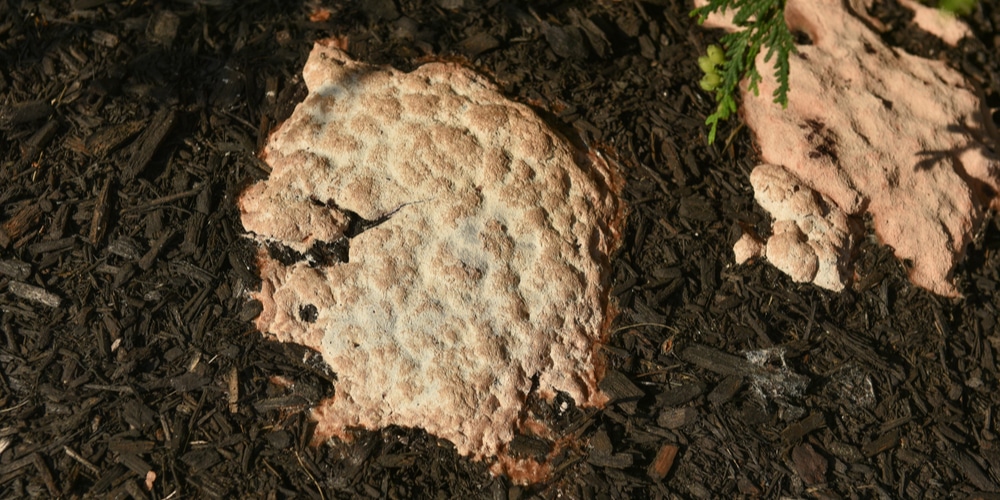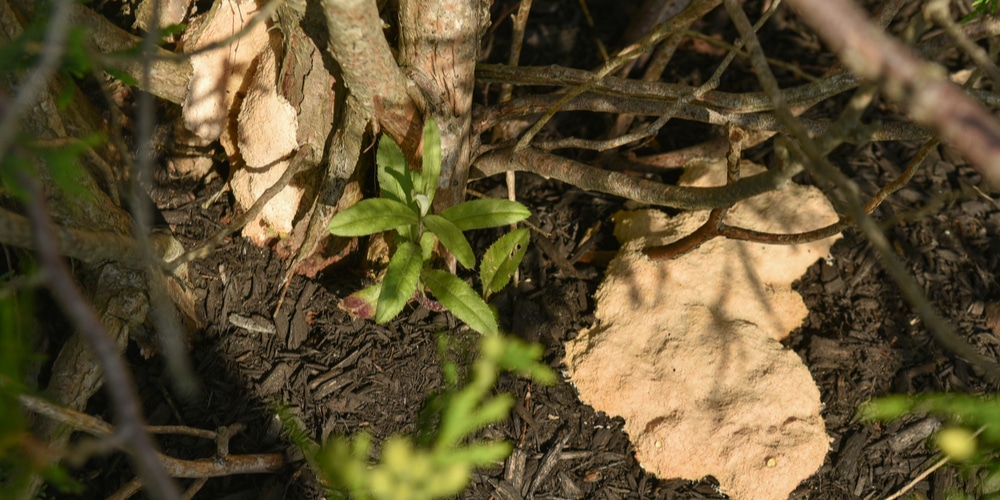Have you ever experienced leaving mulch in your garden in the evening and the morning after you find that the mulch has some kind of yellow fungus on top of it? This is a common occurrence, and it is nothing to be alarmed about.
The yellow fungus forms on the surface of the mulch due to the high level of moisture present. Although the yellow fungus is not harmful to your plants or garden, it can be unsightly.

This yellow fungus is commonly known as yellow slime mold or dog vomit. It is a member of the class Myxomycetes, which contains over 700 different species of slime molds.
Slime molds are not actually fungi but are often mistaken for fungi because they both reproduce by releasing spores. Slime mold spores are usually black or brown and can be found on the surface of the mold.
Why Do Yellow Slime Molds Appear?
Slime molds are often found in moist, shady areas, such as mulched flower beds. They are attracted to the moisture and organic matter in mulch, which provides an ideal environment for growth. Slime molds are usually yellow or orange in color but can also be pink, blue, or black.
These colorful fungi are often mistaken for mold or mildew. However, slime molds are a type of protist and are not related to mold or mildew. Slime molds feed on decaying leaves and other organic matter.
As they grow, they produce spores that are released into the air. When the spores land on a suitable surface, they germinate and grow into new slime molds.
In some cases, slime molds can become so abundant that they cover the entire surface of the mulch. While they are generally considered harmless, some people find them unsightly.
How To Get Rid Of Them
You can remove yellow slime molds from your mulch in a few different ways. Some of which are:
Rake Them Off The Surface
Raking them off the surface is the best way to remove yellow slime molds. You need to get a rake and gently push it across the mold. The spores will break up and release into the air. If you have allergies, you should try to avoid breathing in the spores. You can also put on a mask or respirator to avoid inhaling the spores.
Once you have raked up the mold, you should dispose of it in a plastic bag. This will prevent the spores from spreading to other areas of your yard.
Mix Them Into The Soil
One method is to mix them into the soil. This can be done with a shovel or garden hoe. Simply loosen the soil around the mold and dig it up, ensuring to include as many of the roots as possible. The mold will then decompose along with the rest of the organic matter in the soil. This method is most effective in early spring or late fall when the weather is cool and moist.
Pour Boiling Water On Them
Another way to remove yellow slime molds is to pour boiling water over them. This method is especially effective for small patches of mold. Boil a pot of water and then pour it directly onto the mold. The heat will kill the fungi and cause them to break down into the soil. You may need to repeat this process several times to completely remove all of the molds.
How To Prevent Yellow Slime Mold
If you don’t want yellow mold suddenly popping up in your lawn or garden, there are a few things that you can do to prevent it. Some of which are:
Remove Fallen Leaves And Other Debris
Simply remove any affected leaves or twigs from your garden and dispose of them in the trash. You can also take measures to prevent yellow slime mold from appearing in the first place by keeping your garden clean and tidy. Remove fallen leaves and dead plant matter regularly, and prune any overgrown branches.
Aerate Your Lawn Regularly
Aerating your lawn regularly will also help to prevent yellow slime mold. Aeration helps improve air circulation and drainage, keeping the soil around your mulch dry. You can aerate your lawn with a hand aerator or a power aerator.
Mulch yellow fungus: Final Thoughts
Slime molds are often found in moist, shady areas and can be yellow, orange, pink, blue, or black. They feed on decaying leaves and other organic matter and produce spores that spread to new areas.
There are a few ways to remove them from your yard – rake them off the surface, mix them into the soil or pour boiling water over them.
You can also take measures to prevent them from appearing in the first place by keeping your garden clean and tidy and aerating your lawn regularly.
Related Article: Why Does My Compost Have Mold?

